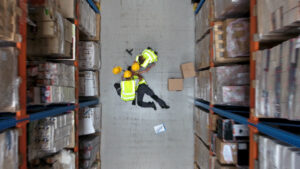- Solicitors must be notified and asked to attend the site. Advice and support on site of an experienced health and safety solicitor in the immediate aftermath of an incident can be very helpful in calming the situation and leading the interface with the regulator.
- Establish an internal investigation team under the direction of external legal counsel. Pay particular attention to the independence of that team.
- Ensure that the incident site is not disturbed, and that evidence is not tampered with.
- Insurers should be notified – this will probably be a requirement under a company’s Public or Employer’s Liability policy, but insurers may also provide indemnity in respect of some or all legal costs.
- Ensure employees are reminded of the need to avoid speculation, particularly in written form (including emails) whilst the internal investigation team is carrying out its investigation.
- Support should be provided swiftly as is necessary and appropriate to the deceased’s family.
- Counselling and other support should be arranged to those employees who either witnessed the accident or the aftermath of the accident. This should be extended to the family of the deceased.
READ: Code Red Pt 2: Aftermarket prosecutions following serious incidents
READ: Code Red: Is your business geared to handle a serious incident?
- A key single point of contact should be established to act as liaison with the regulators to deal with all requests (such as to interview individuals or obtain documents).
- A log of all documents shared with the police or regulator should be kept as well as a record of those who have provided statements.
- All press enquiries should be directed to a single point of contact and all employees must be briefed not to speak to the press.
- Where possible, photographs and videos of the incident scene should be taken from all angles.Crucial evidence such as CCTV needs to be downloaded before it is overwritten.
- It is likely that a company will be obliged to notify the death pursuant to the Reporting of Injuries, Diseases and Dangerous Occurrences Regulations 2013.Think about whether similar incidents could occur elsewhere on site, or within the organisation, and halt such activities to prevent a potential repeat.
Adam Bernstein











Go to comments